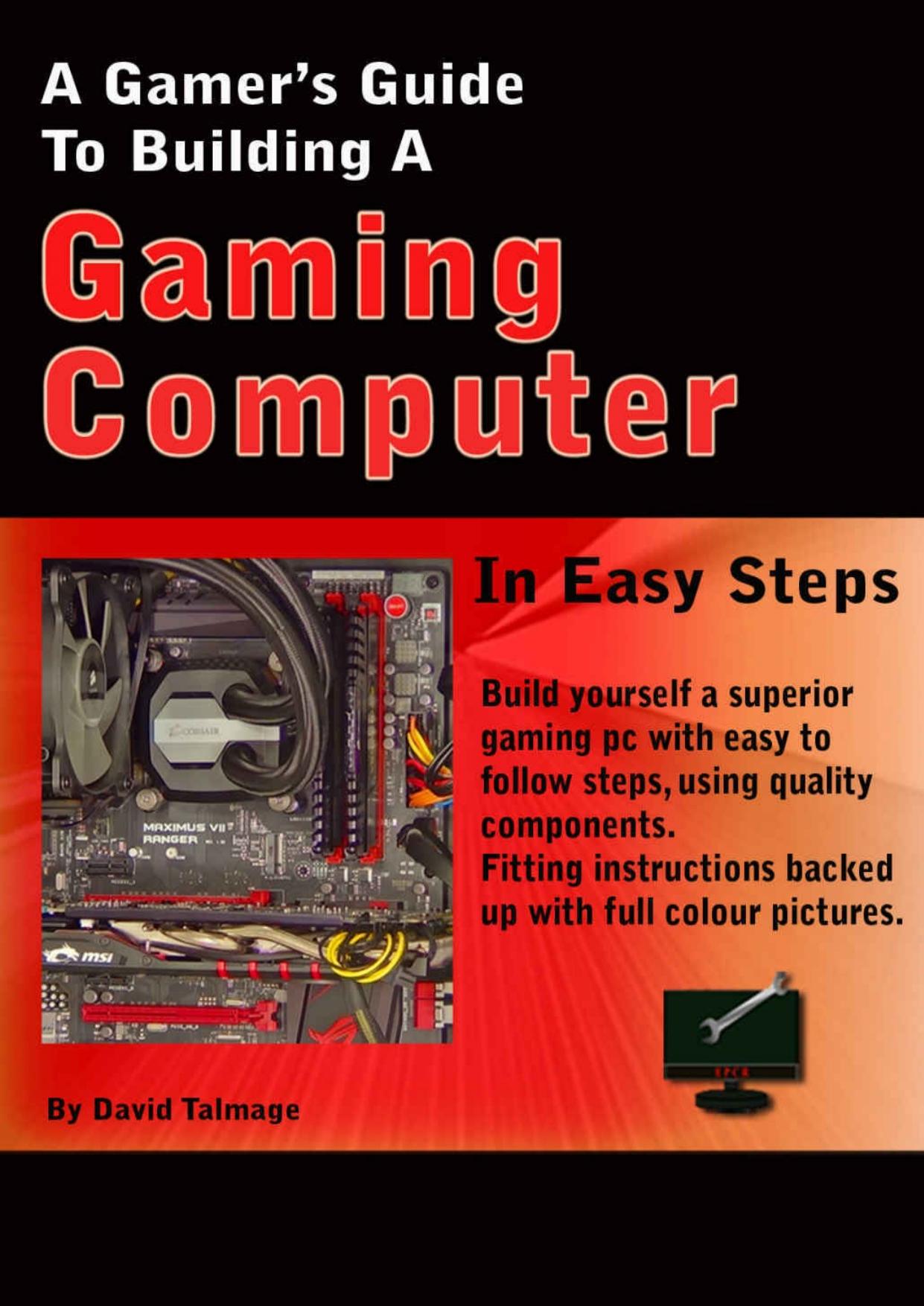A Gamers Guide To Building A Gaming Computer by David Talmage

Author:David Talmage [Talmage, David]
Language: eng
Format: epub, azw3, pdf
Tags: Computers
Publisher: David Talmage
Published: 2016-01-20T23:00:00+00:00
Computer Case
Some cases are short and thin, while others are tall and wide and some are cube shaped. Some PC cases are made to look like something else such as a steam train or Dr Who's Tardis. So how do you pick a case that's right for you? Well let's go through some of the more standard, commonly used cases.
E-ATX: E-ATX cases will accept E-ATX motherboards. These cases are the largest of the four mentioned above, often measuring around 55 – 65cm in height. These cases are
often used for those that want two, three or four graphics cards installed, as these larger cases have more room. They also typically have around five optical drive bays and eight to ten hard drive bays. Some E-ATX cases can also accept ATX, mATX, mITX and XL-ATX motherboards.
ATX: ATX computer cases will accept ATX motherboards. These cases are a little smaller than E-ATX cases often measuring about 40 – 55cm in height. They are the most popular case size for gamers right now. Many consider this case size to be just right as they often have enough room for all that you want to throw in there without being too big. They normally have enough space for two graphics cards, two to four optical drives and four to eight hard drives. Some ATX cases can also accept mATX and mITX motherboards.
mATX: mATX cases will accept mATX motherboards. These cases are a little smaller than the ATX cases with an approximate height of 30 – 40cm. They often have room for one graphics card, one or two optical drives and two to four hard drives. You can build a good gaming PC in these cases but you would have to choose your computer parts carefully as they are not as spacious as E-ATX or ATX cases. Some mATX cases can also accept mITX motherboards.
mITX: mITX cases will accept mITX motherboards. These cases are the smallest of the four mentioned above coming in at around 20 – 30cm in height. They often have room for one graphics card, one optical drive and a couple of hard drives. These cases are the least popular with gamers as they are so small, but you can still build a good gaming PC with one of these if you choose your parts very wisely. The mITX cases can only accept mITX motherboards as they're not big enough to accept any of the other motherboards mentioned above.
The names that manufacturers and retailers give to their case sizes (full tower, mid tower, mini tower or small form factor) are just a guide. For example, most full tower cases will accept E-ATX motherboards but some will not. Most mid tower cases will accept ATX motherboards but some will not. So names such as full tower, mid tower, mini tower and small form factor can be a little misleading. To make sure you get the right case for your motherboard, see which motherboards the case will accept before you buy.
Download
A Gamers Guide To Building A Gaming Computer by David Talmage.azw3
A Gamers Guide To Building A Gaming Computer by David Talmage.pdf
This site does not store any files on its server. We only index and link to content provided by other sites. Please contact the content providers to delete copyright contents if any and email us, we'll remove relevant links or contents immediately.
Embedded Programming with Modern C++ Cookbook by Igor Viarheichyk(4141)
Implementing Cellular IoT Solutions for Digital Transformation by Dennis McCain(4053)
Linux Device Driver Development Cookbook by Rodolfo Giometti(4049)
Embedded Linux Development Using Yocto Project - Third Edition by Otavio Salvador & Daiane Angolini(3910)
TinyML Cookbook by Gian Marco Iodice(3813)
Simplifying 3D Printing with OpenSCAD by Colin Dow(2926)
TinyML Cookbook by Gian Marco Iodice & Ronan Naughton(2676)
Fusion 360 for Makers by Lydia Sloan Cline(2334)
Networking A Beginner's Guide by Bruce Hallberg(2315)
Hands-On Linux for Architects by Denis Salamanca(2150)
Computers For Seniors For Dummies by Nancy C. Muir(2124)
But How Do It Know? by J. Clark Scott(2105)
Raspberry Pi and MQTT Essentials by Dhairya Parikh(2066)
Arduino Project Handbook, Volume 2: 25 Simple Electronics Projects for Beginners by Geddes Mark(2026)
9781803246888-ENHANCING DEEP LEARNING WITH BAYESIAN INFERENCE by Unknown(1994)
Hack and HHVM by Owen Yamauchi(1976)
31 Days Before Your CompTIA A+ Exams (Shanette Luellen's Library) by Benjamin Patrick Conry(1944)
Hands-On Internet of Things with MQTT by Tim Pulver(1855)
MicroPython Projects by Jacob Beningo(1852)
